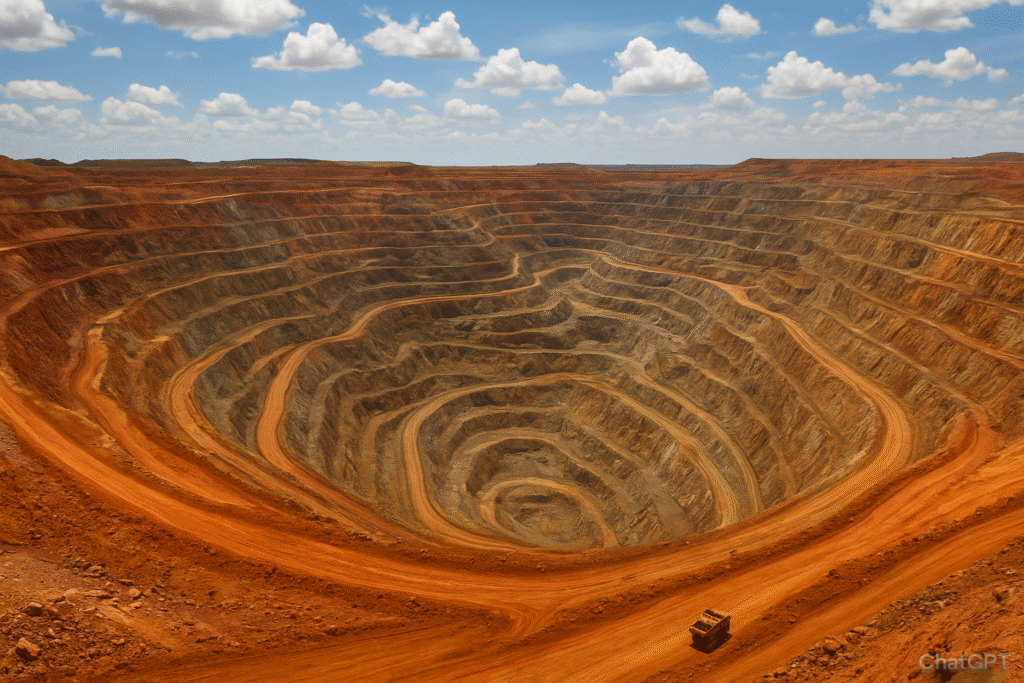Mining in Michigan plays a significant role in the state’s economy, particularly in the Upper Peninsula where metallic minerals like nickel, copper, and iron ore are abundant. The industry includes diverse operations ranging from native copper mining to sand dune and coal extraction. Michigan continues to be a key producer of minerals such as cement, peat, potash, and industrial sand, supporting both local and national markets.
The resurgence of mining activity is linked to increasing demand for metals used in electric vehicle batteries and renewable energy technologies. Mines like Eagle Mine, the only primary nickel mine in the U.S., illustrate how modern mining combines economic opportunity with environmental responsibility. This blend of history, resource wealth, and evolving industry practices makes Michigan a unique and vital mining region.
Understanding the scope and impact of mining in Michigan reveals not just the state’s natural resource base but also the challenges and advancements shaping its future. Readers will find insight into the complex balance between development and conservation within this longstanding American mining hub.
History and Current Status of Mining in Michigan
Mining in Michigan has deep roots, dating back thousands of years. It began with Native Americans mining copper and evolved into a major industry producing iron, copper, and other minerals. Today, Michigan continues to mine a variety of resources using modern methods.
Evolution of Mining Industries
Mining in Michigan started around 3000 B.C. when Native Americans extracted copper from surface deposits. European settlers began large-scale mining in the 19th century, focusing on copper and iron. Iron mining expanded rapidly after 1845 with the opening of the Marquette Range.
The late 1800s saw Michigan leading the nation in iron ore production. Copper mining remained significant, especially in the Upper Peninsula. By the 20th century, mining diversified to include other minerals like nickel and silver. Although some mines have closed, mining persists as a valuable industry with modern technology.
Major Mining Regions
Michigan’s Upper Peninsula (U.P.) is the primary mining area. The Marquette Iron Range was the first major iron source, followed by the Menominee and Gogebic Ranges. Each region contributed significantly to the state’s iron ore output between 1844 and 1890.
Copper deposits are concentrated around the Keweenaw Peninsula, one of the oldest mining regions in the U.S. Gold occurrences exist but are less prominent. The state’s mining zones are linked closely to the geology shaped by ancient glacial activity.
Notable Minerals and Ores
Key minerals mined in Michigan include:
- Iron ore: Historically dominant, especially from the Marquette and Menominee Ranges.
- Copper: Mined extensively by Native Americans and later commercial miners in the Keweenaw Peninsula.
- Gold: Found in smaller quantities; notable but not widespread.
- Nickel and silver: Secondary resources sourced mainly during 20th-century exploration efforts.
These minerals have supported Michigan’s mining economy for over 150 years, meeting demands from industries like automotive manufacturing and battery production.
Modern Mining Operations
Today, Michigan mines continue extracting metallic minerals with updated equipment and stricter regulations. Mining companies focus on environmentally responsible practices, including proper waste management and land reclamation.
New interest in battery minerals spurs exploration for materials like nickel and cobalt. The Michigan Department of Environment, Great Lakes, and Energy oversees mining permits and monitors compliance. Nonfuel mineral production remains a multi-billion-dollar sector, reflecting ongoing contributions to the state’s economy.
Economic, Environmental, and Regulatory Aspects
Mining significantly influences Michigan’s economy while posing environmental challenges that require active management. The regulatory framework involves both state and federal oversight aimed at balancing economic benefits with environmental protection and public health.
Economic Impact on Michigan
Mining has historically been a key economic driver in Michigan, particularly in the Upper Peninsula. The extraction of minerals like copper, iron ore, sand, and gravel supports numerous jobs and contributes to state revenues through taxes and royalties.
Commercial mining operations have provided infrastructure improvements and regional development. Additionally, the mineral industry supports related sectors such as transportation and manufacturing. However, economic benefits fluctuate with global commodity prices and resource availability.
Environmental Management and Challenges
Michigan’s mining industry faces significant environmental challenges, including habitat destruction, soil degradation, and groundwater contamination. Aggregate mining strips vegetation and disrupts ecosystems, which can lead to loss of wildlife habitats.
The state promotes reclamation efforts to restore disturbed land after mining activities cease. Fees are sometimes imposed on mining operations to fund land restoration projects. Effective environmental management requires continuous monitoring and addressing pollution risks to maintain soil and water quality.
State and Federal Regulations
Mining in Michigan is subject to multiple layers of regulation. The state regulates land use, worker safety, mineral rights, and environmental protection through laws shaped by recent bills like SB 429. This legislation updates mining regulations to incorporate environmental concerns more effectively.
Federal oversight includes environmental laws such as the Clean Water Act. Michigan’s regulatory framework emphasizes compliance to reduce pollution, ensure restoration, and protect public health. Coordination between state and federal agencies helps enforce standards and supports sustainable mining practices.
